Starmont Winery and Vineyards 2012 Cabernet Sauvignon Reviews
Potable Chenin Day (Epilogue): Due south African Sampler, Role II – Wagnerians vs. Martians
29 06 2021
Past Raymond Lamontagne
[These bottles were provided as samples for review purposes.]
Although Drink Chenin Twenty-four hour period is now in the rearview mirror for this year, our South African wine feature is but half complete. In that location is one more Chenin in the mix, simply hither Due south African cool climate "upward and comer" Sauvignon Blanc gets its just due, along with a few classic reddish varietals and at least one oddball (if one tin ever truly refer to the unobjectionable-to-a-fault Pinot Grigio every bit "odd"…I feel this grape might merit the designation in S Africa due to a relative lack of historical presence in the region, but I digress). As South African wine skilful Tim James notes in his brainy handling of the region'due south history, various problems such equally ongoing racially informed inequalities, a floundering economic system, and viticultural hazards such as leafroll virus may "dim the brightness of the new world of Due south African vino, simply do not obscure it". When Apartheid finally came crashing down in 1994, the S African vino business almost immediately made rapid improvements as the international market place opened up, and South African winemakers responded with a game of catch-upwards that has led to some intriguing results. South Africa morphed from a region notorious for overproduction of incomparably mediocre wines to 1 capable of showing the legitimate wine-growing potential of the land and climate through the lens of diverse international grape varieties, forth with one (in)famous native cross, Pinotage. In short, South Africa did finally catch the terroir bug. Although this failed to spread quite every bit rapidly as the same vine virus, nosotros at present live in a earth of South African vino where a farmer might sell his sometime vine Chenin Blanc grapes to a pocket-sized-scale boutique producer who honours the health of the land simply much as said farmer might, as opposed to a mammoth co-operative that ultimately consigns this vinous aureate to an anonymously dilute identity death amongst the hoi polloi in a huge vat (a little more on huge vats later).
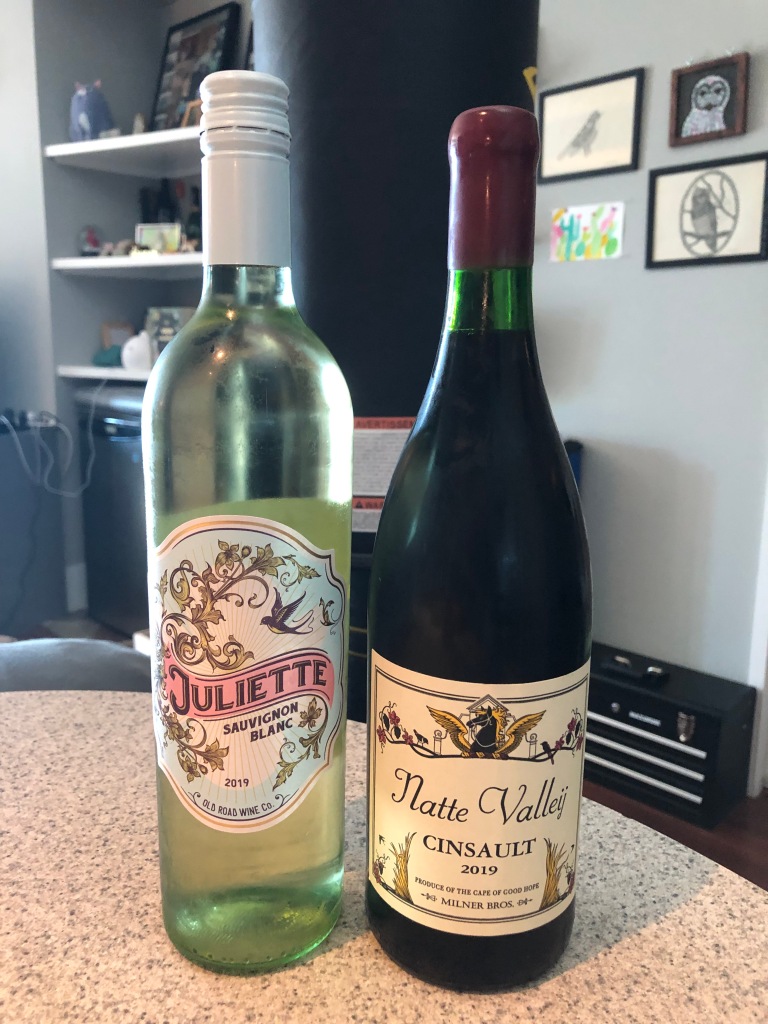
My personal journey with the wines of South Africa began quite early into my obsession with this greatest of beverages, as I constitute myself immediately taken with the oft-repeated trope that Due south Africa naturally bridges the gap between the finessed restraint of the archetype European wine regions and the opulent fruity hedonism of the New World. Far exist it for me to either gainsay or corroborate what existent experts have to say on this matter, but my own feel broadly affirms this notion. If the grapes are not excessively ripe, many Cape wines (particularly whites) display a fine acid construction and fifty-fifty a fresh minerality that cleaves nicely with Sometime Globe sensibilities, yet there is also a concurrent sun-kissed tropical vibe that y'all probably won't mistake for Chablis…such wines are non austere. I also not infrequently become a distinctive herbal earthiness, for a lack of a better general descriptor, particularly in the reds. I am intrinsically drawn toward such stylistic middle grounds, because there are multiple layers on which to focus, and such wines can surprise when one is able to simultaneously experience elements that initially seem discordant (similar, say, a fresh stony minerality that co-occurs with bright fruit). 1 has to be careful not to go also carried away, though. The present spread of wines range in price signal from around $9 to well-nigh $30. This is a set that will capture Greatcoat wine in a much broader sense than a vino nerd like me might typically seek to feel. A farther word or ii on that if I may, which volition explicate the rather quaint title of this post.
Read the rest of this entry »
Comments : Go out a Comment »
Tags: cabernet sauvignon, cathedral cellar, chenin blanc, cinsault, kwv, natte valleij, pinot grigio, pop and pour, sauvignon blanc, s african wine, tasting notes, vino blog, wine review, wine reviews, yyc
Categories : Wine Reviews
Malbec Maelstrom, Part II: Malbec Earth 24-hour interval
17 04 2021
By Raymond Lamontagne
[These bottles were provided as samples for review purposes.]
Happy Malbec World Twenty-four hours! Hopefully yous read Peter's review of the first seven bottles of this xiv-bottle bacchanal, so that you lot are up to speed on this day's origins. I'one thousand certainly ready to do my part. I unabashedly savor Argentinian Malbec, fifty-fifty if in some examples I can struggle with its ubiquity, its oft-simplistic bent toward pure hedonism, and (said another way) its majestic Popsicle crowd-pleasing "Golden Retriever of wine" stylings. Crevice a pout once in a while, will ya? Nevertheless, Argentina is rife with high distance wine regions where true greatness is possible. I would propose that much potential remains to be realized, particularly as some middle path between confectionary and brooding smoke is hewn. Today, though, we can and should celebrate what a decidedly unique wine civilisation has already delivered. I don't retrieve the vintners in Argentine republic who decided to take a adventure on these extremely inclement sites always dreamed that international superstardom was possible. Or that Malbec would exist the vehicle to get them there.

Malbec probable originated in Cahors, where it goes past the name "Cot". Apparently the "blackness wines" from this region, an obvious reference to Malbec's intense colour, were sometimes used to add together pigmentation and body to the wines of Bordeaux, at least until Cot itself fabricated the jump to that famous region in the late 1800s. The handle "Malbeck" apparently refers to a vintner who wound upwards cultivating the grape throughout the Medoc region of Bordeaux. A half-sibling of Merlot, Malbec (which at some juncture lost the "k") is a vigorous vine that can hands yields big crops of relatively watery berries, particularly when clones are selected for such productively, a feature that according to Stephen Brook led to Malbec's drastic refuse equally a Bordeaux variety. Fright not, however. Malbec was introduced to Argentina by French agronomical engineer Michel Pouget in 1868, where is yielded smaller, tighter clusters of berries than in Bordeaux. Pouget seemed to take chosen amend clones, or at the very to the lowest degree Argentine republic'southward extreme viticultural climate was just what was needed to resurrect Malbec into the dark-fruited, violet-scented, slightly gamey wines we tin can bask today. Every bit I write this, it is eight:00 am here in Calgary. What can I say? I'm thirsty, and it'south Malbec World Day.
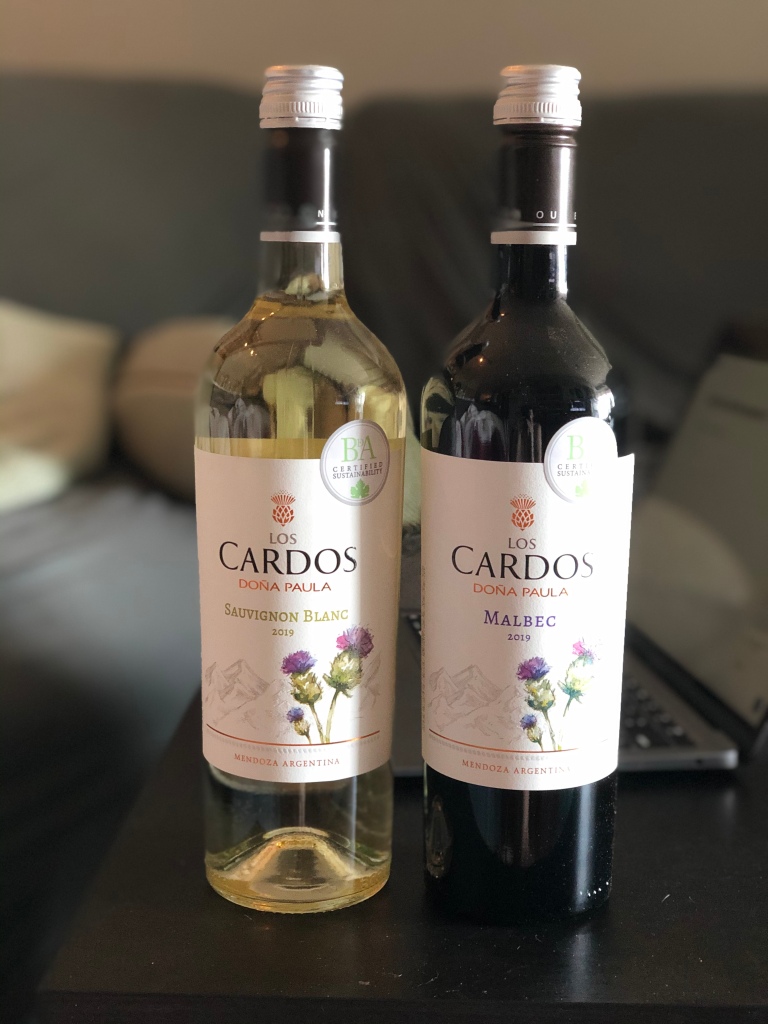
Read the rest of this entry »
Comments : Leave a Comment »
Tags: 2018 vintage, 2019 vintage, Argentinian Malbec, cabernet sauvignon, malbec globe day, carmine wine, white wine, wine review
Categories : Wine Reviews
Culmina Winery: The Bordeaux Varietals
9 04 2021
By Raymond Lamontagne
[These wines were provided every bit samples for review purposes].
It is with great pleasure that I pick up where Peter recently left off , following up his batch of Culmina curiosities by exploring a tidy package of three Bordeaux varietals from this esteemed producer, all hailing from the same 2016 vintage. This affords a unique opportunity to compare the three grapes across the same vintage weather condition, and as it turns out, with vineyard held constant as well. All grapes featured here come up from Culmina's manor Arise Demote, a southeast-facing site forth British Columbia's vaunted "Gilded Mile". Culmina founder Don Triggs subjected this site to a bevy of temperature, water memory, and soil analyses to determine that information technology shared many similarities with famous sites in Bordeaux. The phase seemed gear up for making these varieties smooth in the Okanagan, but not before further precision was sought in terms of a detailed mapping of terroir variations within the Arise Bench area itself. This designation of "microblocks" means that grapes tin be meticulously calibrated to viticultural parameters in guild to assist ensure a practiced balance between ripeness and fresh acerbity. This sort of obsessive attention to detail has long fatigued me to this winery, as does its willingness to pair the archetype wine heritage that underpins Bordeaux-style reddish wines with a trailblazing spirit, every bit Peter recently documented. Allow's investigate the classics end of the equation.
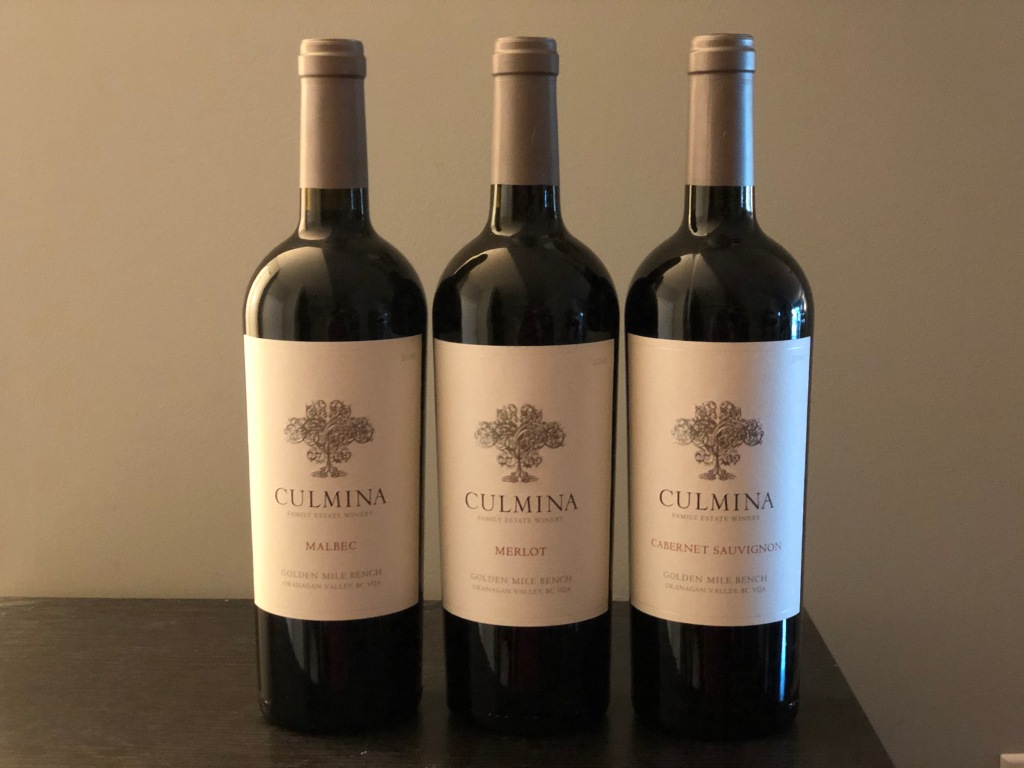
Read the rest of this entry »
Comments : Leave a Comment »
Tags: 2016, arise bench, bc wine, cabernet sauvignon, culmina, don triggs, malbec, Merlot, okanagan, pop and pour, wine web log, wine review
Categories : Wine Reviews
Wine Review: Friends of Oceania
three 02 2021
By Peter Vetsch
[These bottles were provided equally samples for review purposes.]
Since nosotros tin't travel correct at present (without being wildly irresponsible, at least), I find myself lingering more than in the memories of places I've been. We went to Australia and New Zealand on our honeymoon in 2008, and were so smitten with the latter that we went back once again, this time with kids in tow, for our tenth anniversary in 2018. Obviously a render voyage in seven more years will have to exist in the works; rarely have I felt more than at dwelling in a place so far away. Our more recent NZ holiday featured a day trip through the South Island Sauvignon Blanc wonderland of Marlborough, which is both more pastoral and more compact than I would have expected in low-cal of the extraordinary production figures emanating from the region, enough to flood global retail shelves with a piercingly distinctive take on an otherwise broadly familiar grape.

The visit included a cease at Greywacke, to me a pinnacle producer of the region, started by a human being who constitute fame in wine and so reimagined the pursuit, this time on a more than personal, artisanal scale. I got to show my sons grapevines, one of whom was old plenty to take a passing interest in the subject. He has a special affinity to the winery that bears his proper name, from a state that he has notwithstanding to come across, in a office of Australia that I have however to visit myself. Vasse Felix volition always be royalty in our household by word association, aided by the fact that their unabridged lineup is consistently exceptional, never chasing trends, ever honest to its vision and its environment. That Vasse Felix's entry-level wines bear the name "Filius" or "son of", is hopefully as heartwarming to fathers of Felixes everywhere and not only to me. I currently feel like I would honey to take off to ANYWHERE, merely I would especially honey to be back on this side of the world. For the fourth dimension being, I will use these bottles as transport instead.
Read the remainder of this entry »
Comments : iii Comments »
Tags: 2016, 2016 vasse felix filius cabernet sauvignon, 2019, 2019 greywacke sauvignon blanc, australia, cabernet sauvignon, filius, greywacke, margaret river, new zealand sauvignon blanc, pop and cascade, sauvignon blanc, vasse felix, wine blog, wine review, yyc
Categories : Vino Reviews
Bricks Vino Advent Calendar 2019: Day seven
7 12 2019
By Tyler Derksen
Every bit we come to the stop of the beginning week of this year'southward Bricks Wine Advent Calendar, I'g thrilled to be able to join Peter and Ray's blogging efforts. I think this is my first vino entry on Popular & Pour and following these titans of amateur Calgary wine blogging will be no modest feat, but today'due south wine is oddly advisable for the endeavour. Simply as I take inspiration from Peter and Ray and their deep knowledge and passion for wine, so too does today's wine look to an icon of the French wine globe for its own inspiration. Let'south hope we both practise them justice.
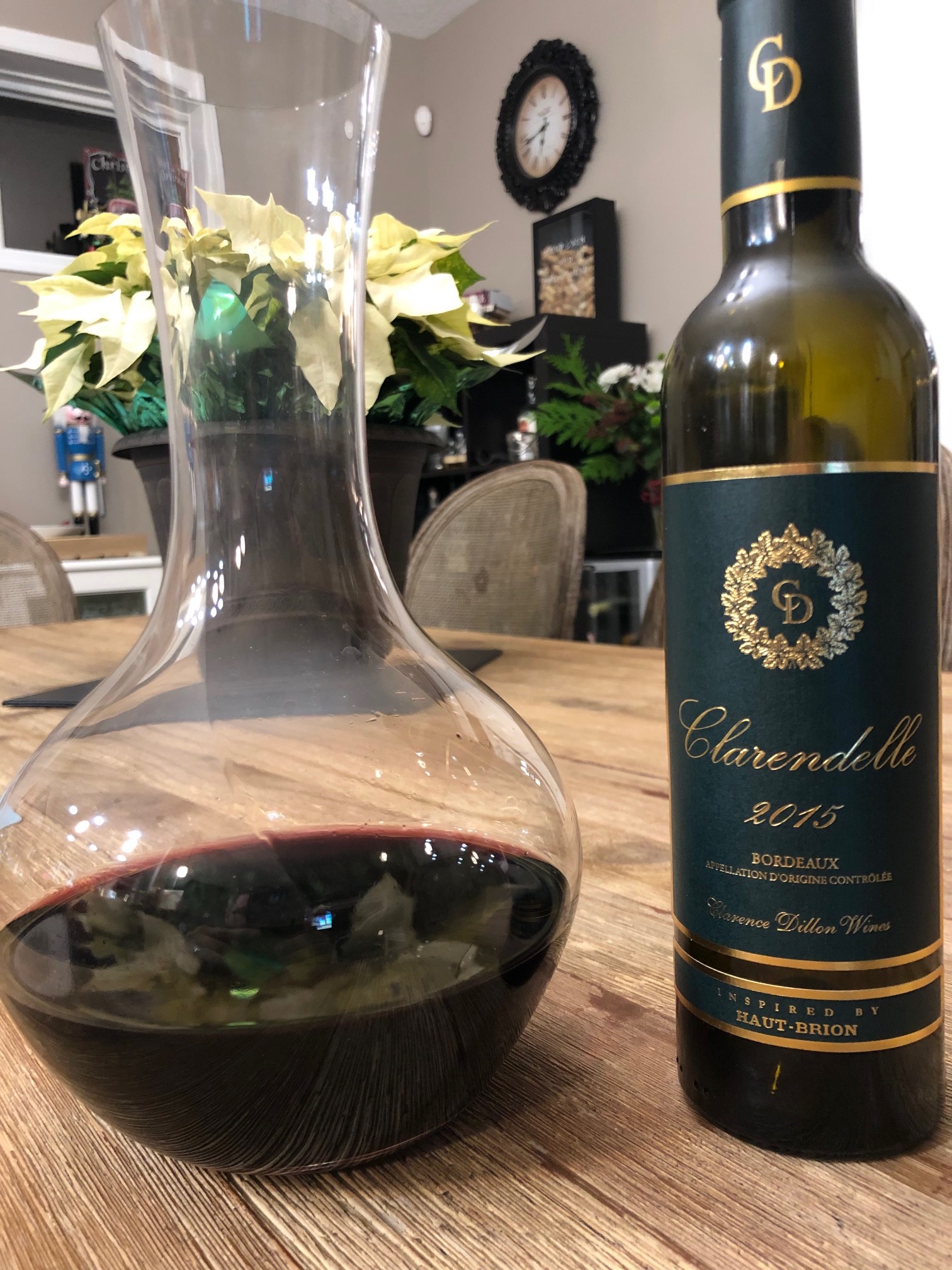
Nosotros close of the week with the 2015 Clarendelle Rouge from Bordeaux, which is plumbing fixtures after Bordeaux was sort of chosen out by Ray yesterday, who began his word of the Starmont Cabernet Sauvignon by reminding us that it was a California Cab that shell the best that Bordeaux had to offer in the 1976 Judgment of Paris tasting. This may not exist the Judgment of Paris, simply it volition be interesting to see how this red alloy from Bordeaux stacks upwardly to last night'due south New World offering.
Clarendelle is produced by Clarence Dillon Wines, which is a subsidiary of Domaine Clarence Dillon, a family of wineries that includes the legendary Chateau Haut-Brion and Chateau La Mission Haut-Brion. Clarendelle was launched in 2005 by the Chairman of the Domaine Clarence Dillon, Prince Robert of Luxembourg (the great-grandson of Clarence Dillon, who purchased Chateau Haut-Brion in 1935), in an effort to create an accessible yet quality wine at an affordable price point, one that does non need to sit down in your cellar for years before enjoying. Clarendelle unabashedly takes its inspiration from the famous Haut-Brion, proclaiming this inspiration proudly on the bottle (if you're going to observe inspiration in a detail wine, you could exercise far worse that Haut-Brion). Unfortunately for me, I haven't had the pleasure of drinking Chateau Haut-Brion, so I cannot confirm whether or not Clarendelle was successful in combining the elegant, earthy characteristics for which the vaunted Chateau Haut-Brion is known with the approachable and affordable sensibility that was Clarendelle's genesis. That said, I am appreciative of the endeavour to brand a quality Bordeaux wine that does non require me to obtain a 2d mortgage on my house.
The 2015 Clarendelle Rouge is comprised of 83% Merlot, 10% Cabernet Sauvignon and seven% Cabernet Franc. Clarendelle views 2015 to have been a great vintage, due to ideal atmospheric condition patterns that yr. A warm jump and hot June and July allowed for full ripening of the grapes, while a more temperate August and September prevented the wine from becoming overripe and jammy, enabling the development of balance and complexity. The grapes were harvested from vineyards in a number of sub-regions in the broader Bordeaux AOC, including St. Emilion, Haut Medoc, and Pessac Leognan with some fifty-fifty coming direct from Chateau Haut-Brion, Chateau La Mission Haut-Brion and Chateau Quintus (the St. Emilion property that comprises part of the Dillon stable).
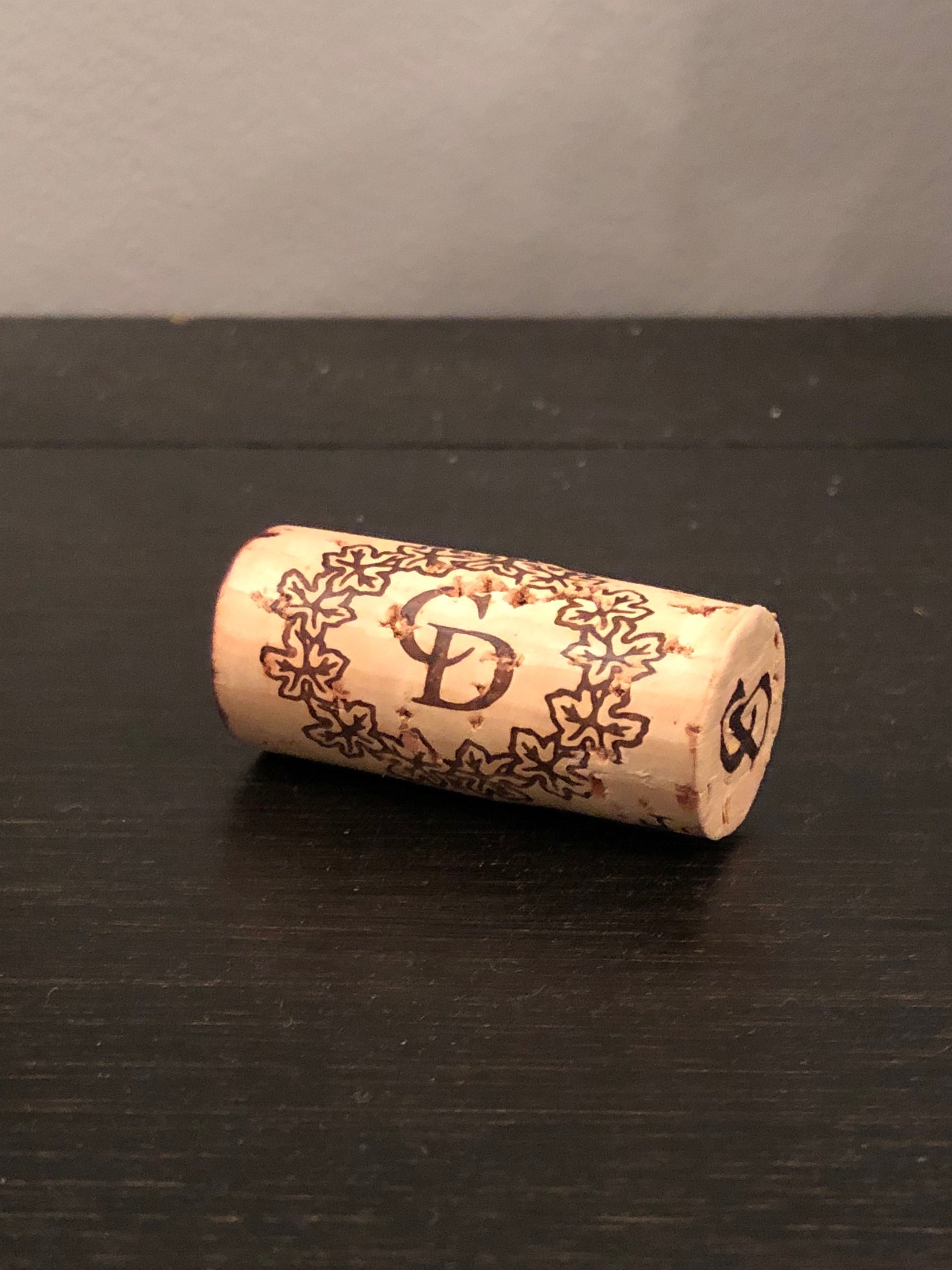
Cork Rating: 7/10 (conspicuously effort was fabricated, fifty-fifty for the one-half bottles).
I decanted the 2015 Clarendelle for an hour before drinking, at the suggestion of online sources. In the glass, the wine is a cute nighttime ruby colour. On the nose, fresh raspberry, vanilla, hot chocolate powder, sage, coriander, unlit cigar leaf, leather book binding, mushroom, and wet dirt intermingle giving this a notably Old-Globe flair. The palate was brighter than I expected with notes of raspberry, blackberry, plum pare, nighttime romaine lettuce (probably from the Cabernet Franc), light-green bean and a slightly bitter fiery notation to finish. The wine is more bold than elegant and certainly embraces its youthful vigour. I would exist happy to beverage this again, perhaps with a squeamish wearisome cooker stew. A fine end to the calendar week!
88+ points
Comments : 2 Comments »
Tags: 2015 vintage, bordeaux, bordeaux blend, cabernet franc, cabernet sauvignon, french wine, Merlot
Categories : Calgary Wine Life, Wine Reviews
Bricks Vino Advent Calendar 2019: Day 6
vi 12 2019
By Raymond Lamontagne
Oh, California Cab. As one of the world'due south criterion wine styles, victor over Bordeaux in the infamous 1976 Judgment of Paris tasting, this volition of course have a place in any wine Advent calendar worth its salt. I also cannot forbid my heed from conjuring up such pejoratives as "overly oaked", "heavily extracted", "boozy", and fifty-fifty " Mega Imperial ". I will concede that for many consumers at the time, and many even at present, massive size is a virtue. Fortunately a sea alter began in the 2000s. A much-needed shift started taking identify, from a winemaking culture focused largely on harnessing a technical vino scientific discipline to yield a consistent production to delight the boilerplate consumer, towards a "grassroots" eye path where science withal matters but is now gratis to ally more European notions such as restraint, finesse and elegance, and even the notion that reasonable vintage variation can add together interest and pleasure to the wine-drinking experience. It is no longer safe to make blackness and white assumptions well-nigh the monolithic nature of Cali Cabernet, and wineries like Starmont take played a central role in this paradigm shift.
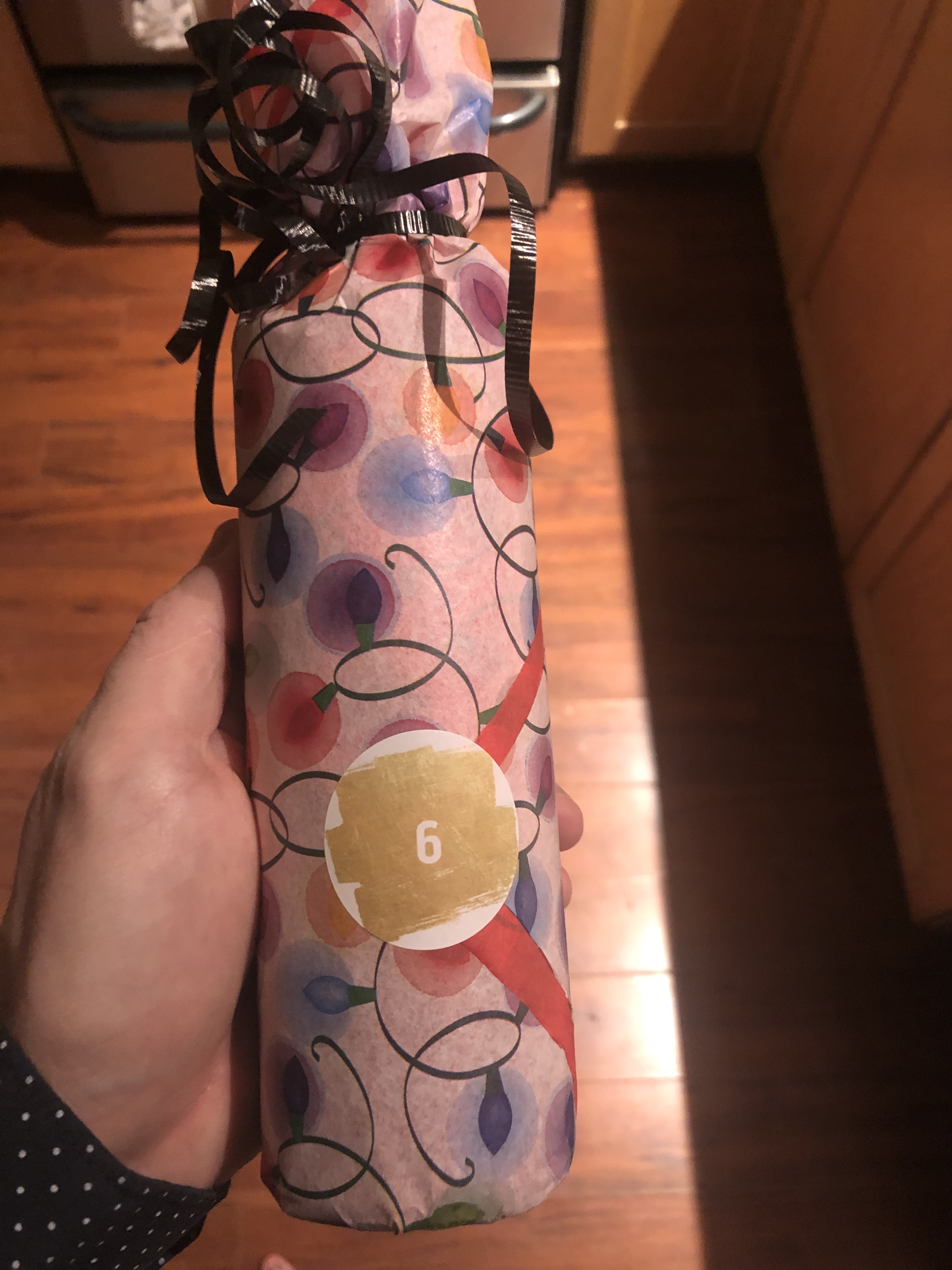
The name Starmont originally graced a bottle of Carneros Chardonnay in 1989. From there the name grew into a total-fledged brand, relocating from its original home with the more established Merryvale brand to the Stanly Ranch holding, home to a couple of quality Carneros vineyard sites. Although the wines are no longer produced at a "green" facility built at one of these sites (that facility was sold this twelvemonth), the commitment to sustainability remains. Although all-time known for Chardonnay and Pinot Noir, Starmont does not shy away from Merlot or Syrah. In that location is an interest in seeing how each varietal does in its place, whether said place is the Stanly Ranch itself, the Carneros AVA, or the broader Napa Valley and North Coast AVAs, and this interest in terroir may have something to do with one of the men at the helm.
Starmont winemaker Jeff Crawford was born in Alaska but has managed to get superbly well-travelled, picking upwardly $.25 and pieces of winemaking knowledge from places equally far-flung as Greece. His general approach is to utilise his travels and reading to cram his encephalon with as much history, winemaking philosophy, technical acumen, and tasting experiences equally possible. His unceasing quest has led to equipment upgrades at the winery, yet Jeff wishes Starmont to remain a "microcosm" of the Carneros region: a source of fifty-fifty-handed, balanced yet structured wines that can still convey some degree of subtlety.

The 2017 Starmont North Coast Cabernet Sauvignon is bottled under the very wide North Coast AVA appellation, with the grapes hailing from vineyards across the northern part of the state (41% Sonoma, 37% Lake, 13% Napa, ix% Mendocino). The wine is 81% Cabernet Sauvignon, xi% Petite Syrah, and 8% Merlot. This blending approach renders much of the philosophy behind terroir irrelevant for this particular bottle, unless the concept of site specificity is somehow extended to rather large tracts of state that exist as legal entities rather than embodying bona-fide "climats". However, the goal hither was to obtain a mix of sites that reveals restraint in the final execution. Handpicked, manus sorted, and de-stemmed fruit was not crushed at the winery, leaving over 90% of the berries whole. This arroyo, if y'all were wondering, tin prolong fermentation, as sugar release from the berries is delayed. This gives winemakers more command over the procedure, and can likewise raise fruitiness and yield a more than delicate, silky texture in the finished wine. After a cold pre-soak, the vino spends an average of 14 days fermenting on the skins and is then aged for 15 months in a combination of American and French oak (30% new).

Stelvin Rating: six/10 (hey, this is a decent Stelvin: vinous colour, nice font.)
This is indeed pretty silky in the mouth, with a supple, velvet-like latticework of tannins reinforcing a rather lite-bodied frame. The aromas practice tick all the right boxes: blackcurrant (duh!), some cool climate black cherry, fifty-fifty maybe red cherry Nibs, Aero bar, Swiss mocha instant java mix, nutmeg, MacIntosh's toffee, very slight red pepper flake and well-worn cedar plank. The oak notes I am pulling off this are assertive but not overly intrusive. All of the ripe even so fresh fruit is powdered with graphite and waves goodbye with a medium-duration plume of oaked red currant jelly. An efficient, seamless purple elegance, one that you volition probable enjoy but that is unlikely to provide total recollect a twelvemonth from at present.
88+ points
Comments : Leave a Comment »
Tags: 2017 vintage, Appearance, advent calendar, bricks, bricks wine company, cabernet sauvignon, napa valley, north coast, pop and cascade, starmont winery, wine appearance, wine advent calendar, yyc
Categories : Wine Reviews
Volcanic Hills 2: Eruptive Reds
13 ten 2019
By Peter Vetsch
[These bottles were provided as samples for review purposes.]
The Volcanic Hills story is a charmingly Canadian one. Founder Sarwan Gidda's begetter Mehtab moved to the Okanagan Valley from East Punjab, Republic of india in 1958 with his wife and children, condign the starting time Indo-Canadian family to settle in West Kelowna. Later on a few years, Mehtab and family were some of the most prolific apple farmers in the valley, but from the late 1970s onward, slowly but surely, their agricultural vision began to migrate to grapes. Ray's excellent introduction to Volcanic Hills Estate Winery outlined how Sarwan took the next step from grape farming to wine product in the 2000s, and how his children are at present helping to carry on this burgeoning family legacy.

Volcanic Hills is largely a grower-producer, making the bulk of its portfolio from its ain 68 acres of estate vineyards in the West Kelowna expanse, carrying on the Gidda family'due south initial farming mission. Not only are all of VH's Chardonnay, Pinot Gris, Gewürztraminer, Gamay, Pinot Noir, Riesling, Zweigelt (yep, Zweigelt) and Marechal Foch (oh yes, Foch) wines made from 100% estate fruit, but all such grapes are ain-rooted, planted on their own original rootstocks every bit opposed to being grafted onto disease- and pest-resistant rootstocks from non-vinifera species, as is the instance with the bulk of vino grapes worldwide. However, while the other 2 posts in this producer series will focus largely on what Volcanic Hills can do with its own fruit, the iv reds below are exceptions to the VH rule and are instead sourced from warmer climes with longer growing seasons which can reliably ripen them. The Giddas have contracts with other growers in Oliver and Osoyoos from which they obtain their Bordeaux reds and their Syrah, all of which are on offering at the winery for well nether $30. The price points of the entire Volcanic Hills library are such that John Schreiner was moved to name a contempo commodity near them "Wines You Can Beget". But price is only one part of the equation; practice they deliver for what they toll? Read the rest of this entry »
Comments : Leave a Comment »
Tags: 2014, bc vino, cabernet franc, cabernet sauvignon, Merlot, mt boucherie, okanagan valley, pop and pour, sarwan gidda, Syrah, volcanic hills, volcanic hills estate winery, wine web log, wine review, yyc
Categories : Wine Reviews
Wine Review: The Reds of Sunrock Vineyards
4 07 2019
Past Raymond Lamontagne
[These wines were provided as samples for review purposes.]
You cannot make truly practiced wine without ripe grapes. Simple, no? Insufficient sugar in the fruit is not going to leave much for yeast to swallow, and such starved fungi are not going to produce something with sufficient body (and booze) to merit any sort of "greatness" mantle. Moreover, grapes need heat if they are to attain physiological ripeness. This refers to the changes in tannins and other chemic components that occur largely in grape skins, stems and seeds during the ripening bicycle across the mere increment in sugar. These changes are what produce the key varietal aroma signatures we know and dearest, preventing a vino from tasting green, weedy, and brittle.
Although carbohydrate ripeness and physiological ripeness are clearly correlated, information technology would seem that grape hang times might exist a stronger predictor of physiological readiness than just heat lonely, although in my view (and botanically speaking) you aren't going to get any degree of maturation, menstruum, without oestrus. The cardinal question for wine quality is: how much heat is besides much? Overly ripe grapes mean impuissant, muddled wines that are boozy, lacking in precision or definition, and often about devoid of whatever sense of place or regional character. Such wines are going to exist tremendously fruity and powerful, but may not offering much in the fashion of nuance or residue. Equally I read upwards on Sunrock Vineyards, which could very well exist the hottest single vineyard site in British Columbia, I wonder how they approach these ripeness issues.
Sunrock is owned by Arterra Wines Canada, formerly the Canadian subsidiary of the massive Constellation Brands, but recently acquired in 2016 by the Ontario Instructor'southward Pension Programme (for some reason that tickles my funny bone…I'one thousand certain nosotros drove many a substitute teacher to drink). Arterra farms around 1300 acres of Okanagan vineyard, with the expected corresponding range of quality tiers. Jackson-Triggs might be the best known of Arterra's brands, and the single-vineyard Sunrock labels formerly carried this name every bit the top tier of that portfolio. Sunrock is now a standalone winery, a fine instance of a large corporate entity with the expert sense to recognize and preserve the unique character of a single site. And what a site information technology is. Read the balance of this entry »
Comments : 1 Comment »
Tags: 2015 vintage, 2016 vintage, cabernet sauvignon, canadian wine, meritage, Merlot, okanagan vino, red wine, shiraz, sunrock, wine blog, wine review, wine reviews, wine tasting, yyc, zinfandel
Categories : Wine Reviews
The Patient Vintner: Bodega y Cavas de Weinert
24 05 2019
Past Peter Vetsch
[These bottles were provided every bit samples for review purposes.]
If I was to tell you that I was drinking the current release of a mid-tier offering from a well-regarded producer and from a name region, made from 70-110 year-onetime vines, and that the vintage date on the canteen was 2006 , what would you guess the region was? Rioja – maybe a Reserva offer from a traditional-minded producer? Champagne, if you lot are extremely liberal with your definition of "mid-tier"? Somewhere in Italy? Portugal? You would probably be most of the way through the global vino region Rolodex earlier you landed on Mendoza, Argentina, and one time you did, you would probably immediately discard the possibility, knowing this to be the heart of bold, fruity, approachable Malbecs that are released and enjoyed in their youth. Bodega y Cavas de Weinert, and its current-inventory $25 old-vine 2006 Malbec, volition crusade you to re-evaluate all of your presumptions; they are an anachronism in all the all-time ways.

This classical estate actually has a rather recent history: the winery dates dorsum to 1890, only its current identity was tied to its acquisition by Brazilian Bernardo Weinert in 1975. Swiss winemaker Hubert Webber has been at the captain since 1996, when he was ensconced at the ripe old age of 27; his mission has been to craft wines from Malbec, Cabernet Sauvignon and Merlot wines that avoid early showmanship and start to reveal themselves later on a decade or more, equally it is just then that the Bodega will release them to market. Lengthy butt aging (up to 5-vi years in big oak foudres in Weinert's cool granite cellars), then further time in bottle pre-release, is the estate's hallmark — Weinert follows the onetime-school Spanish model of only allowing his wines into the public sphere when they are deemed gear up to drink, whether or not this follows the standard chronological vintage release playbook. In other words, don't necessarily assume that the 2007 volition follow the 2006 as the next wine on the shelf.

The relatively small-scale prices of the finished wines might be reflective of advantageous land and labour costs in Argentina, but they are not the issue of whatever lack of intendance in the vineyard: Weinert's vineyards, located in Mendoza'due south top subregion of Lujan de Cuyo, characteristic largely ungrafted own-rooted vines that are a minimum of 25 years old and are exclusively hand-harvested. Fermentation takes place in cement tanks, and Weinert's cellar boasts both the largest barrel in Argentina (44,000 50) and the oldest barrel in the globe, each of which are a reminder that the goal of the Weinert wines' extended time in barrel is not wood flavor transference (which increases the newer and smaller the butt is), merely gentle, lightly oxidative maturation. I had the opportunity to gustation a trio of Weinert offerings, all 12-13 years quondam (every bit is par for the form in this item corner of Mendoza), to explore this wholly unique accept on Argentinian viniculture. Malbec showtime, as ever. Read the rest of this entry »
Comments : Leave a Comment »
Tags: 2006, 2007, argentina, bodega weinert, cabernet sauvignon, calgary, cavas de weinert, malbec, mendoza, pop and cascade, weinert, wine blog, vino review, vino score, yyc
Categories : Wine Reviews
Yalumba: Coonawarra Cabernet Classes
28 02 2019
[These wines were provided as samples for review purposes.]
Tonight'due south bottle duet replicates i of the most mutual questions that plagues burgeoning wine consumers: when it is worth it to bound a tier? If you lot've tasted and enjoyed the entry-level offering from a given producer, should you invest the extra few bucks to try their adjacent level upwardly? Will you get more than in return, enough more to justify the additional expense? Value judgments and personal preference are always at least somewhat subjective, but objectively, when you motion from a winery'south starter canteen to the next level up, and when you pay more for that privilege, it's often because you lot're getting i or more of: (one) better, more consistent, more than carefully sorted grapes, (2) better vineyard sources, or older vines from within the same vineyard, (3) more than estate fruit grown by the producer itself, (4) better (or at least more expensive) winemaking and maturation practices, including more time aging in oak barrels (my legal career confirms that, in some means at least, time is in fact money), and/or (5) better lots, blends or barrels from the results of the winemaking process. Y'all tin can see the similarities in style, region and approach mutual to the producer betwixt the entry-level or adjacent-level bottles, but in theory at least, due in part to the factors in a higher place, you should run into some elevation in quality and production as you climb the hierarchy.

That isn't to say that pricier is e'er better; diminishing returns are real in the world of wine, particularly when you enter the realm of luxury wines that cannot hope to deliver the value per dollar of their earthbound affiliates. Only in my experience, the price jump from the cheapest offering of a given brand to its next level up most ever pays off in quality; the patience and precision and delivery required to make truly good vino can be strained when yous're also trying to keep beneath a $20 price tag, and fifty-fifty the slightest bit of economic leeway can brand a massive departure. Neither of tonight's offerings fall fully into the entry-level category, merely they represent the first and second rungs of Yalumba's Coonawarra Cab quality tiers, and so they volition serve nicely to illustrate the considerations that go into whether to make the jump. Read the remainder of this entry »
Comments : 4 Comments »
Tags: 2014, 2016, australia, cabernet sauvignon, calgary, coonawarra, menzies estate, menzies vineyard, pop and pour, the cigar, value tiers, wine blog, wine review, yalumba
Categories : Wine Reviews
12 Days of Vinebox: Twenty-four hour period iii
27 12 2018
By Peter Vetsch
I was not expecting to pull a rosé out of the Vinebox drove, let alone (1) one from Spain that (ii) is made from 100% Cabernet Sauvignon, but here we are — this box is already full of surprises. The 2017 Castillo de Benizar Cabernet Sauvignon Rosé hails from the large dead-cardinal Castilian region of La Mancha, the bullseye of the Spanish map. It is an area known mostly as the workhorse of the Spanish wine industry and a generator of unspeakably large volumes of wine every year, cheers in detail to the Airen grape, the most prolifically planted grape you've never heard of, which makes up the largest acreage of plantings in the state. But La Mancha is starting to be well-nigh more than only quantity, and the friendly climate allows for almost anything to be successfully planted, including King Cab. Gems can be plant.

Castillo de Benizar is a brand of producer Bodegas Ayuso, whose massive new 15,000 m2 product facility allows for fermentation/tank storage of upward to 35 MILLION LITRES of wine at once. But this particular bottling (er, vialling) isn't a mere commodity. The Cabernet Sauvignon vines from which this rosé is created are planted on a separate plot specifically and unusually defended only to rosé production, making this no saignée reconsideration or vinous byproduct. Old-school Spanish rosé tends to be mellow and earthy and (intentionally) oxidized, but newer renditions buck that tendency and focus on the freshness and fruit purity that are currently making rosé a universal global language. This one follows suit.

Castillo de Benizar's pinkish Cab is a striking bright watermelon-mankind colour and gives off cool minty and herbal aromas (spearmint, chlorophyll, sage) along with mineral-laced bath salts and soft pink lemonade and raspberry fruit. Even expecting a more modernistic pink have based on its colour, I was nonetheless unprepared for the level of perkiness and effulgence that seeps into every pore of the wine. In that location is zero hint of rustic Erstwhile World earthiness, which has been wholly eradicated and replaced by turbo-charged acrid and vivid Pop Rocks, Thrills gum, strawberry smoothie, pinkish grapefruit, dark-green apple Jolly Rancher and Welch's white grape juice notes. It continually jumps around on the natural language, making all neural synapses fire in rapid sequence. Despite the confectionary nature of its flavours, the rosé finishes make clean and comes beyond every bit adequately dry out, although the piercing acrid probably covers some dose of residual sweetness. Look at that color! Not your gramps's rosado.
88 points

Comments : two Comments »
Tags: 12 days of christmas, 2017, cabernet sauvignon, castillo de benizar, la mancha, pop and cascade, rosado, rosé, spain, vinebox, wine review
Categories : Wine Reviews
Bricks Vino Advent Calendar 2018: Twenty-four hour period 22
22 12 2018
By Raymond Lamontagne
This is my penultimate entry for this project. It has been a long run. I am glad you are still with united states of america. Nosotros told you it would exist opinionated. Pretending that everything tastes the same or somehow manages to country on the same quality benchmark as everything else would be disingenuous. Rest assured, though, I very much appreciate the fine piece of work ALL of these grape growers and vintners have put into this drinkable, this agricultural production, this work of fine art we call vino. I was pleasantly surprised past today's reveal. For you run into, I am a Pinot Noir guy who still manages to really loves Cab, in all of its decadent, rich, lavish celebrity.

Woodward Coulee was founded in 1981 by Rick Small-scale and his married woman Darcey. Named for the canyon where Rick's family has farmed the land for multiple generations, Woodward was the second winery to exist bonded in the Walla Walla Valley, with the Smalls playing an integral role in the process past which the Walla Walla AVA was created in 1984. The focus has been largely on Cabernet Sauvignon and Bordeaux blends, with some grapes grown on manor vineyards while others are sourced from select growers in the Columbia Valley. This accent on farming get-go typically yields wines of place, although Woodward Coulee is not averse to blending across sites to yield a particular mode. Enter the present bottle. Read the rest of this entry »
Comments : Leave a Comment »
Tags: 2014, creative person series, bricks, bricks wine visitor, cabernet sauvignon, columbia valley, walla walla, washington state vino, wine advent calendar, woodward coulee
Categories : Wine Reviews
Bricks Wine Advent Agenda 2018: Day 2
2 12 2018
By Peter Vetsch
Day ii. The spirit is nonetheless strong, the Advent joy withal coursing through my veins, and now the Christmas decor is up and running in my household, so nosotros are officially in the season. I'm not sure what I was expecting when peeling back the wrapping newspaper on the sophomore canteen of this calendar, merely Cru Bourgeois Bourdeaux wasn't information technology. This could bode well. Let's find out.

Chateau Caronne Ste. Gemme was THIS close to the big time. As far equally global wine locales go, it is quite nicely situated in Bordeaux's esteemed Haut-Medoc region, just through a misfortune of cartography it fell a scant 500 metres from where they drew the border for the much more esteemed sub-zone of St. Julien, abode of legendary classed-growths Leoville-Las Cases, Ducru-Beaucaillou, Leoville-Barton, Gruaud-Larose, Langoa-Barton and other pricy hyphenated estates. Its vineyards are actually right beside Gruaud-Larose'south, only on the other side of the appellation tracks and thus on the outside looking in of the 1855 Nomenclature and Bordeaux's ability hierarchy.

That said, it's not the legendary estates where the bargains are constitute; it's their neighbours. Caronne Ste. Gemme has been owned by the aforementioned family unit since 1900, merely in the final 25 years the current generation of owners has overseen a quality explosion thanks in role to a renewed focus on their 45 hectares of Gruaud-side by side manor vineyards, planted on a mound of Cabernet Sauvignon-friendly gravel over sandstone. The wines are fittingly largely Cab (60%), rounded out by Merlot (34%) and Petit Verdot (half dozen%) and run into around a twelvemonth in barrique (20-25% new barrel) and further time in bottle before release.

Cork Rating: three/10 (Better thought: put the CHATEAU name on the cork, not the proprietor'southward proper name.)
This is SUCH a textbook, classic Bordeaux. The 2014 Ste. Gemme is a deep thick ruby-purple colour and smells equally though it's just starting to trace the contours of its aging curve: blackberry and blackcurrant fruit, love apple leaf, juniper, new pennies (back when those were a thing), pink erasers, campfire embers and topsoil. An interesting beam of supporting raspberry crimson joins the chorus once the wine hits the natural language, joined by piping tobacco, cedar shavings, moss and leather, surrounded by still-scratchy tannins that frame rather than block the season symphony. This is a wine that could only exist goose egg else. It is a dream tasting wine, because it purely and accurately displays exactly what it is without overdoing it; varietal and regional typicity squared. The Bordeaux that I own I'k trying to age, so I oasis't cracked a bottle of youthful Bordeaux in some fourth dimension. This makes the argument that I should, while simultaneously making me mull over what it might gustation similar in some other 5 or 10 years. Value Bordeaux, I have found you.
89+ points
Comments : Leave a Comment »
Tags: 2014, Advent, advent calendar, bordeaux, bricks, bricks wine visitor, cabernet sauvignon, caronne ste. gemme, half bottle, haut-medoc, medoc, popular and pour, wine appearance calendar, wine review, yyc
Categories : Wine Reviews
Source: https://popandpour.ca/tag/cabernet-sauvignon/


0 Response to "Starmont Winery and Vineyards 2012 Cabernet Sauvignon Reviews"
Postar um comentário